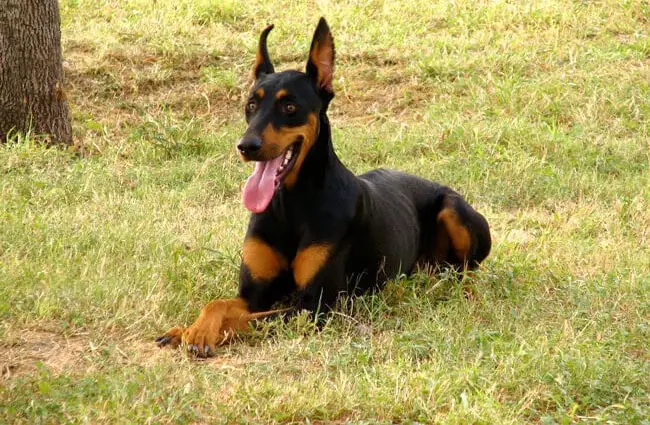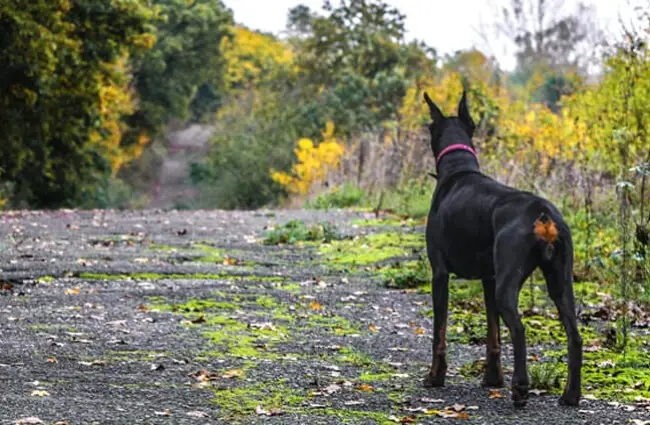A Legacy of Vigilance: Exploring the World of Doberman Pinschers
The Doberman Pinscher, often simply called a Doberman, is a breed synonymous with intelligence, loyalty, and a striking appearance. More than just a guard dog, the Doberman is a versatile companion with a rich history and a surprisingly sensitive nature. This guide delves into the multifaceted world of the Doberman, covering everything from its origins to its specific needs and intriguing characteristics.

Origins and Historical Context
The Doberman’s story begins in the late 19th century in Apolda, Germany. Karl Friedrich Louis Dobermann, a tax collector, night watchman, and dog catcher, sought to create the ultimate protection dog. His motivation was practical: he needed a fearless and reliable companion for his potentially dangerous patrols.
Dobermann’s initial crosses involved local shepherd dogs, Rottweilers, German Pinschers, and, according to some accounts, the Beauceron, Greyhound, and certain terrier breeds. The goal was a dog possessing endurance, size, intelligence, and, most importantly, a strong protective instinct. Although commonly referred to as a “Pinscher,” the breed evolved significantly beyond its early ancestors. After Dobermann’s death, other breeders refined the type, adding elegance and temperament while preserving its guarding abilities. The Doberman quickly gained popularity as a police and military dog, cementing its reputation for courage and trainability.
Physical Characteristics: A Breed Apart
Dobermans are medium to large sized dogs, boasting a muscular and athletic build. Males typically stand between 26 and 28 inches tall at the shoulder and weigh between 75 and 100 pounds. Females are slightly smaller, ranging from 24 to 26 inches and weighing 60 to 90 pounds. Their coat is short, smooth, and glossy, most commonly black, red, blue, or fawn. Rust colored markings, known as “tan points,” are typical on the face, chest, legs, and feet.
Historically, breeders practiced ear cropping and tail docking to enhance the breed’s intimidating appearance and perceived alertness. These practices are increasingly restricted or banned in many countries, and a growing number of Dobermans now have natural ears and tails. A well bred Doberman displays a balanced and elegant silhouette, showcasing both power and grace.

Temperament and Behavioral Traits
Dobermans are known for their intelligence, loyalty, and alertness. They are incredibly devoted to their families and can form very strong bonds. The breed is often described as having a “Velcro” personality, enjoying close contact with their owners. Their protective instincts can make them reserved or cautious around strangers. Early socialization is essential to ensure they develop into well adjusted adults. Exposing a Doberman puppy to a wide variety of people, places, and experiences helps them learn to distinguish between genuine threats and harmless encounters.
Dobermans are highly energetic and require plenty of physical and mental stimulation. They excel in canine sports such as agility, obedience, Schutzhund (protection work), and dock diving. Without sufficient exercise and mental engagement, they can become bored and destructive. A tired Doberman is a happy Doberman. They are playful with their family and often display a goofy and affectionate side.
Caring for Your Doberman: A Comprehensive Guide
Exercise and Training
Daily exercise is essential for a Doberman. Activities may include brisk walks, runs, hikes, or interactive play sessions. Aim for at least one to two hours of vigorous activity each day. Training should begin early and rely on consistent, positive reinforcement. Dobermans are intelligent and eager to please, but they can also be independent thinkers. A firm yet gentle approach is most effective.
Diet and Nutrition
A high quality dog food formulated for large breeds is essential. Dobermans are prone to bloat (gastric dilatation volvulus), a life threatening condition. To minimize the risk, feed them multiple smaller meals throughout the day rather than one large meal. Avoid strenuous exercise immediately before or after feeding.

Grooming
Dobermans have a short coat that requires minimal grooming. Weekly brushing will help remove loose hair and keep their coat shiny. Regular nail trimming and ear cleaning are also important. Pay attention to their skin, as they can be prone to allergies and skin sensitivities.
Health Considerations
While generally robust, Dobermans are predisposed to certain health conditions. These include dilated cardiomyopathy, von Willebrand’s disease (a bleeding disorder), intervertebral disc disease (often called wobbler syndrome), and hip dysplasia. Responsible breeders screen their breeding stock for these conditions to reduce the risk of passing them on. Regular veterinary check ups are crucial for early detection and management of any health issues.
Dobermans as Family Pets: Are They Right for You?
Dobermans can make wonderful family pets, but they are not the right breed for everyone. They require a significant commitment of time, energy, and resources. They thrive in homes where they receive plenty of attention, exercise, and mental stimulation. Early socialization and consistent training are essential to ensure they are well behaved and comfortable around children and other animals.
A Doberman is not a suitable choice for a first time dog owner or someone who leads a sedentary lifestyle. However, for an active and experienced owner willing to invest the time and effort, a Doberman can be a loyal, loving, and protective companion.

Beyond the Basics: Interesting Facts About Dobermans
Dobermans served in World War I, assisting wounded soldiers and performing various tasks for the Red Cross. Their intelligence and trainability made them ideal for such service.
Dobermans have a unique ability to learn and retain complex commands. They are often used in search and rescue operations and as service dogs.
Their sleek and muscular build has earned them the nickname “Velcro dogs” because they like to stay close to their owners.

Concluding Thoughts
The Doberman Pinscher is a breed that commands respect and admiration. With its striking appearance, intelligence, and unwavering loyalty, it is easy to see why this breed has captivated dog lovers for generations. Understanding their history, temperament, and specific needs is crucial for ensuring a happy and fulfilling life for both the dog and its owner. For the right person, a Doberman is more than just a pet; it is a devoted companion, a protector, and a cherished member of the family.






![Red Angus Closeup of a beautiful Red Angus cowPhoto by: U.S. Department of Agriculture [pubic domain]https://creativecommons.org/licenses/by/2.0/](https://animals.net/wp-content/uploads/2020/03/Red-Angus-4-100x75.jpg)

